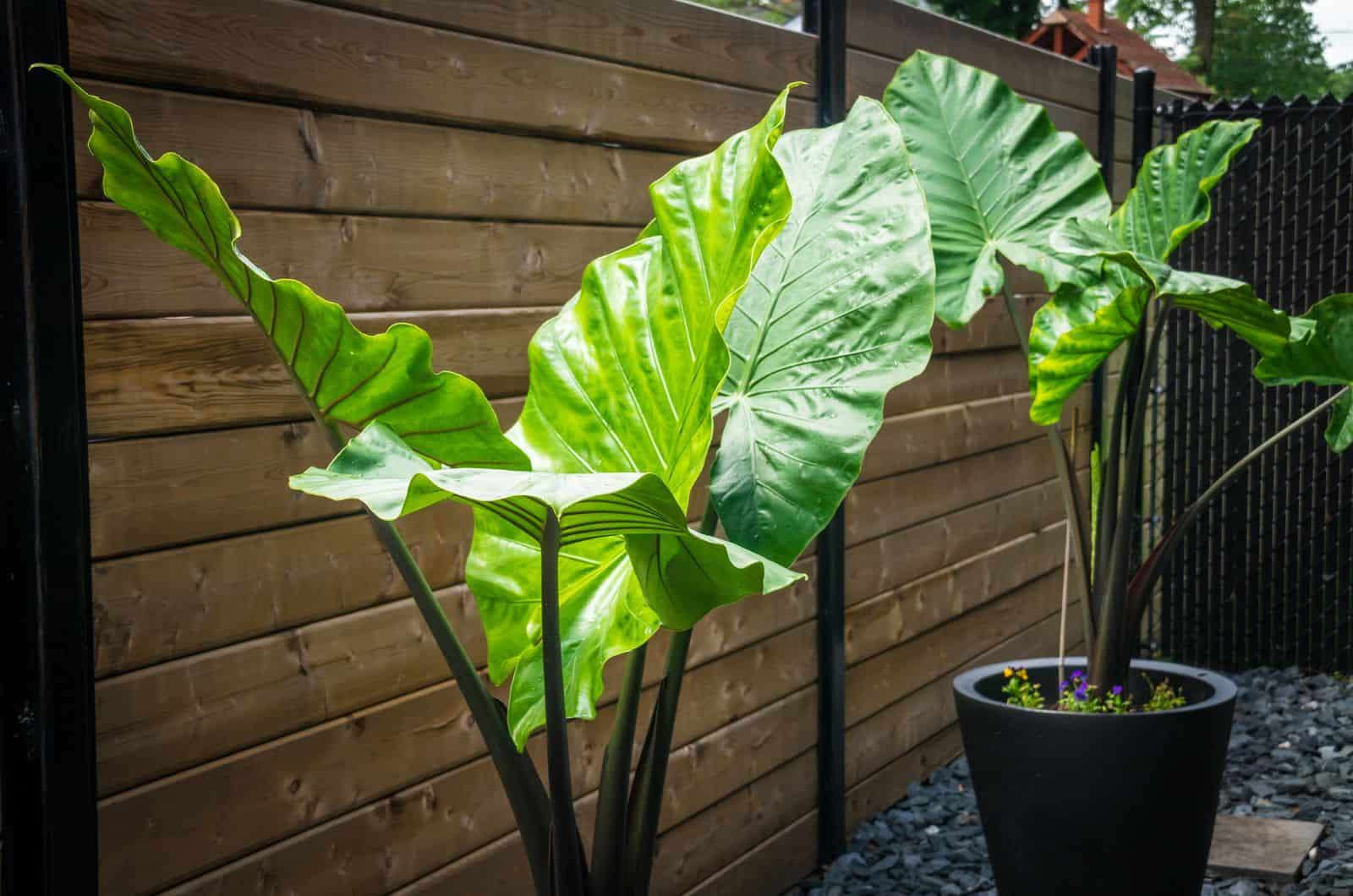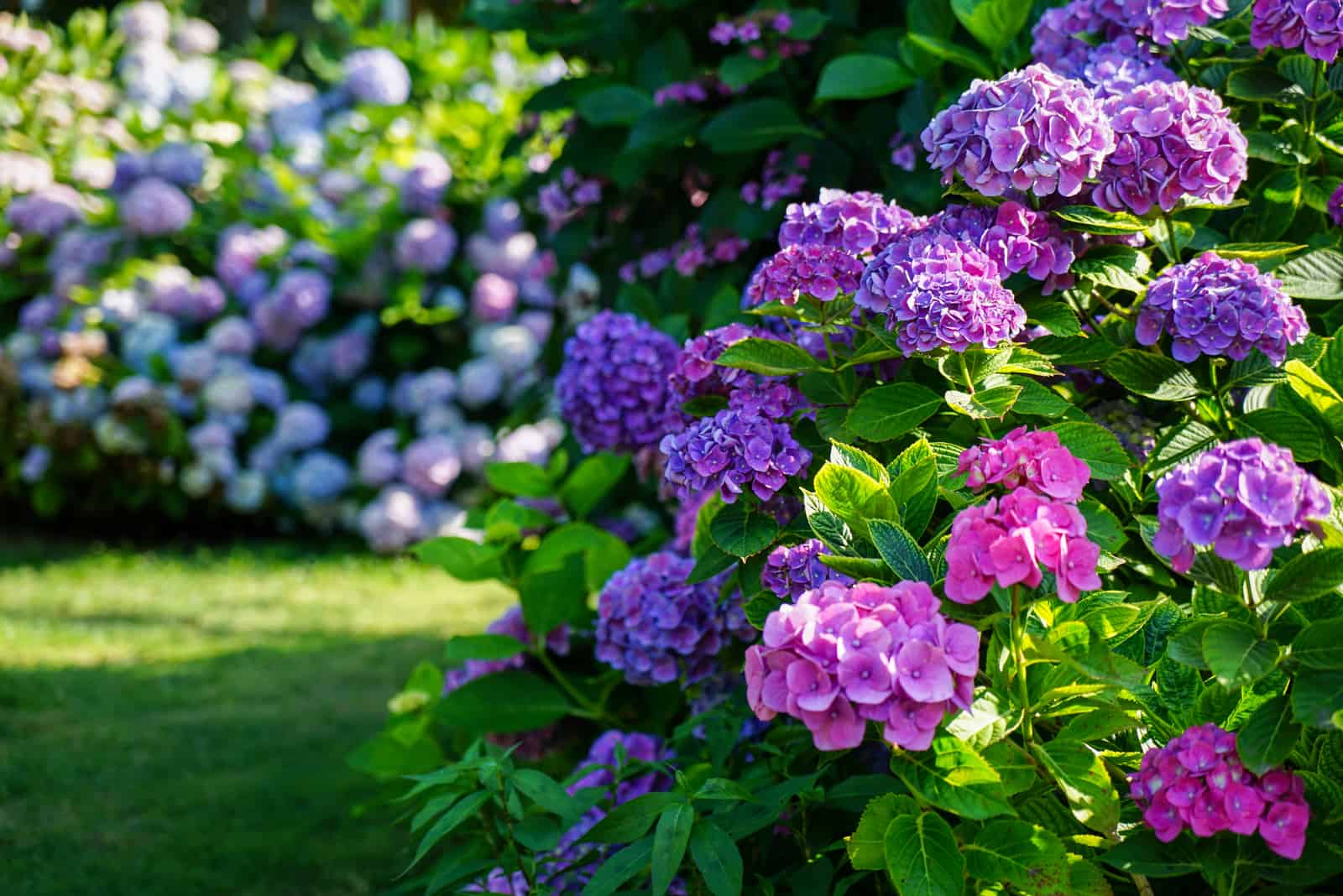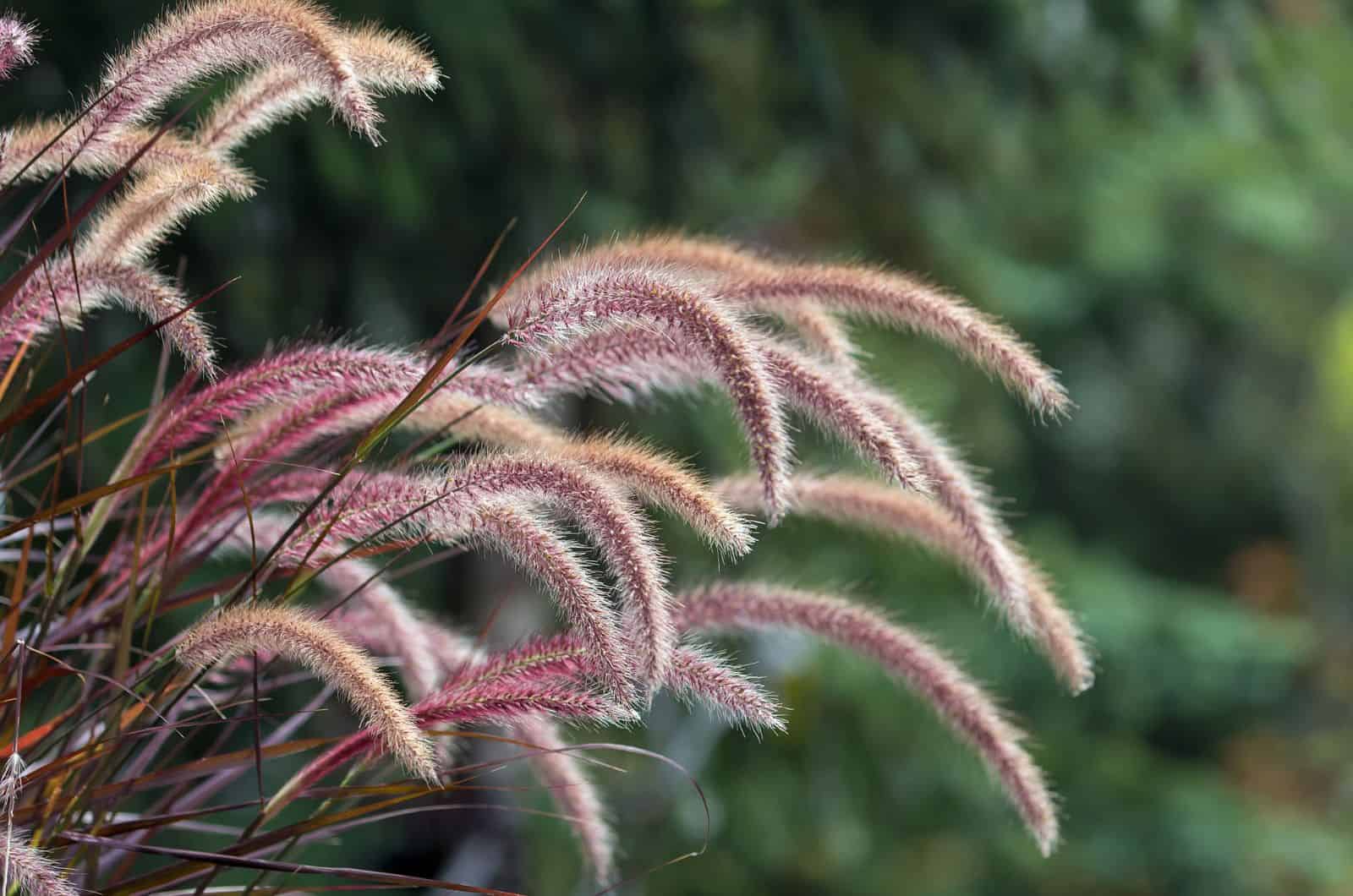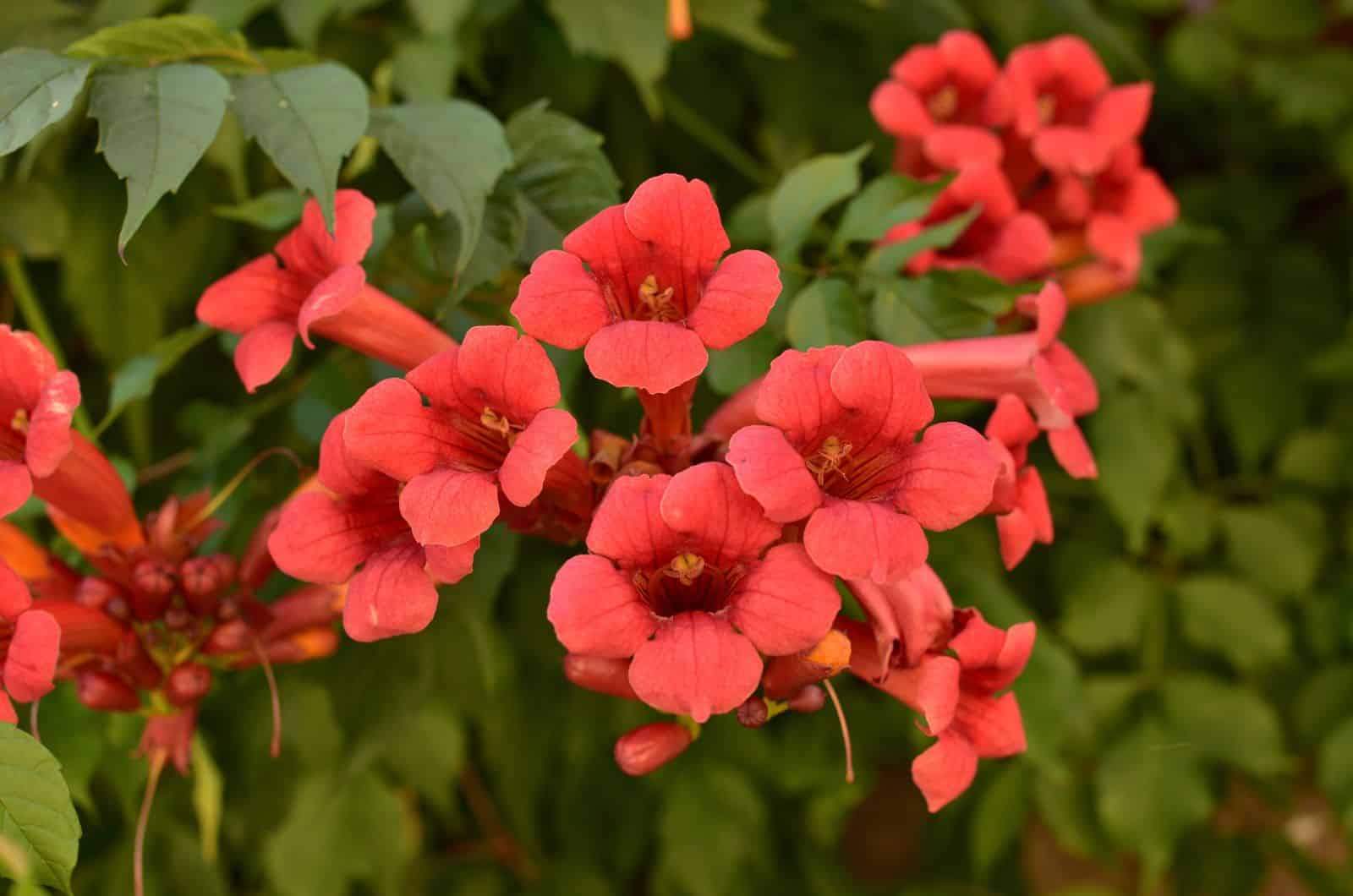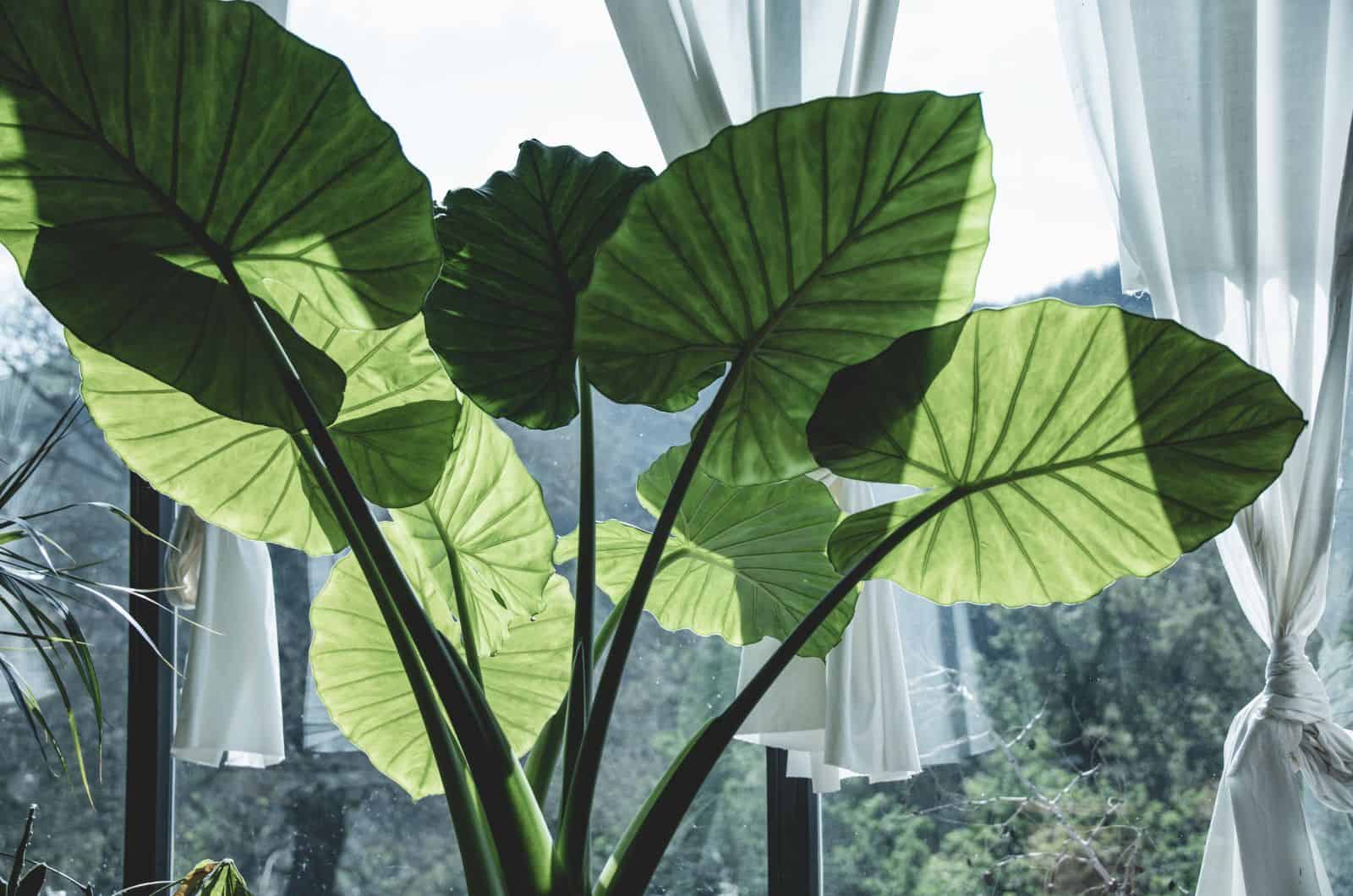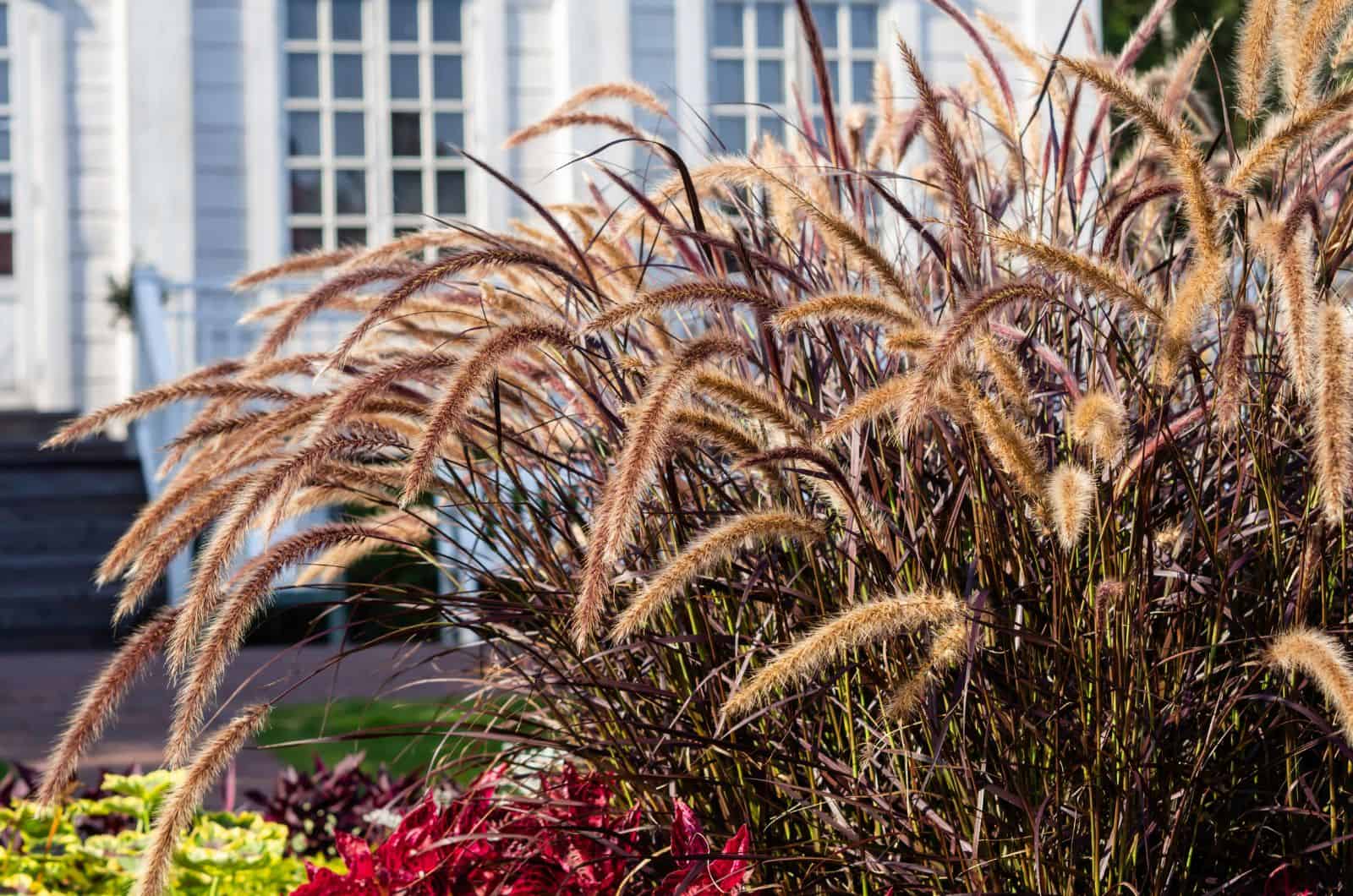Plants have many functions in our lives: we use them for food, they attract pollinators, produce oxygen, keep the world running, and improve our overall interior and exterior designs.
However, there is another purpose for having plants in our outdoor spaces—to make a live privacy fence and make us feel more comfortable in our homes.
We’ve included twenty different tall potted plants for privacy that you can add to your container garden and enjoy their dark green foliage and colorful flowers.
But we’ll talk more about them in the sections below.
20 Tall Potted Plants For Privacy
Below, you can find four different types of plants that growers use for making privacy screens, and they include shrubs, ornamental grasses, vining plants, and some other foliage and flowering plants.
We’ll briefly present their basic needs and appearance so that you can choose one for your patio more easily.
Let’s start!
Container Shrubs For Privacy Screens
Shrubs are an excellent addition to all landscape designs, whether you want to use these tall outdoor potted plants for privacy, as a centerpiece in your front yard, or to simply add more texture to your landscape.
There are many different shrubs, such as hibiscus, hollies, yucca, etc., but below, we’ll focus on the more common ones, such as hydrangeas and lavenders, box and dogwoods, and even thujas.
All you need to grow these plants is a large pot, good soil, and a suitable location.
1. Hydrangea
Hydrangea is an absolutely gorgeous plant that can produce pink, purple, blue, green, or white flowers.
There are shorter hydrangea varieties that grow up to 3 feet tall, but you can choose a larger cultivar if you want more privacy, as there are 6-feet tall hydrangeas.
Another thing that makes this plant suitable for container gardening is the fact that it belongs to the shallow-rooted plant species, which means that its roots don’t need too much space to thrive.
However, there are a couple of things you need to be aware of, such as where to plant it and how much to water it.
The chart below brings you the plant’s basic requirements that can help you choose the perfect location for it.
[table id=370 /]2. Arborvitae (Thuja)
Thuja is a low-maintenance hedging plant and we’re used to seeing this evergreen shrub planted in the ground to frame the patio, but there’s no reason why you shouldn’t be able to grow it in a container.
Thuja has more extensive roots than hydrangeas, so it needs a much bigger pot. Choose a container that’s 6–7 times larger than the plant’s root system (a 20-gallon planter should do the trick) if you don’t plan on moving it any time soon.
However, if you’re going to transplant the arborvitae into the ground sometime in the future, you don’t have to choose such a massive container.
[table id=371 /]3. Dogwood
Dogwood is an all-time favorite shrub (or a small tree) that stays green year-round. It is a slow-growing low-maintenance shrub that you don’t have to irrigate at all unless your region experiences dry spells.
Taking care of the Cherokee Princess dogwood cultivar when planted in the ground isn’t that difficult, and it gives so much in return—white flowers that last about two weeks and then green leaves that follow.
Of course, there are many varieties with pink flowers that would be an excellent addition to all the outdoor greenery.
Furthermore, growing this tall plant in a container might be a bit more demanding since it has extensive, fast-growing roots that you’ll need to prune every once in a while to prevent the plant from becoming root bound.
[table id=372 /]4. Boxwood
Boxwood is an excellent choice if you want a privacy hedge as it can grow up to 15–20 feet tall (although, it is a bit smaller when grown in a container).
You can get it from a local garden center, plant it in a container, and then move it to different locations to enjoy its evergreen foliage.
There are even variegated boxwood varieties, so you can add some color to your green garden.
This shrub is an excellent container plant since it grows rather slowly, but there are a couple of things you need to know before planting it in a pot.
Boxwood needs good drainage, so using a planter with some drainage holes is a must-have. Also, make sure that the pot is larger than the plant’s root ball so that it can properly develop.
Of course, those are not the only needs this plant has, and below, you can learn more about the lighting and moisture that this plant requires.
[table id=373 /]5. Lavender
Lavender is one of those evergreen plants that we can easily grow in many different climates; we just have to choose a variety that tolerates more hot or cold weather.
If you live in cooler zones, choose cold hardy cultivars such as ‘Phenomenal’ or ‘Munstead’ so that you don’t have to move it inside in order to overwinter it.
Lavender plants are deer-resistant due to their strong fragrance and drought tolerance, which makes them very easy to take care of.
You can use them to make a lavender hedge or grow them on their own, and they will still adorn your backyard with their scented leaves and flowers.
Here are its main requirements:
[table id=374 /]Ornamental Grasses
Of course, shrubs and small trees aren’t the only plants that you can use for making privacy screens. There are many different types of grasses that can create quite a fence and improve the landscape decor all at once.
We’ll bring you five beautiful varieties, such as fountain and pampas grass, bamboo, and more, so stick around.
1. Purple Fountain Grass
This spiky outdoor plant looks amazing with its burgundy foliage, purple blooms, and purplish seed pods.
Its 3–5 feet tall blades dance in the light breeze and provide a privacy screen while maintaining some sightlines.
It isn’t very hardy, but if you grow it in a pot, you can always take it inside to let it overwinter in a cool and brightly lit area.
And once the temperatures get warmer and all the danger of frost has passed, you can take this grass back outside.
[table id=375 /]2. Pampas Grass
Pampas is a big outdoor plant that grows fast and thrives in salty soils, which is why we frequently see it adorning homes in coastal regions.
Its elaborate silvery to sandy-pink flower plumes are always striking and appear to be floating almost weightlessly in the breeze of late summer (or early fall), so it’s not surprising that many growers decide on this perennial plant.
Some species, such as Purple pampas, can grow up to 10 feet tall, but there are dwarf varieties that are perfect for smaller gardens and containers.
[table id=376 /]3. Bamboo
Did you know that the tallest grass in the world is actually bamboo?
Well, this skinny, tall plant can reach quite some heights, so it’s an excellent choice to use as a privacy screen.
(Or you can grow it as a houseplant or make a bamboo hedge; your choice.)
It is one of the best plants to grow since it’s pretty adaptable, and there are cultivars that can handle cold weather, as well as those that enjoy moderate temperatures.
However, there is a difference between tall and bushy varieties. The tall bamboo plant requires a 40-gallon container, while the bushy one can thrive in a 20 or 30-gallon one.
Of course, there are some specific needs that you have to meet in order to grow this grass, and you can read them below.
[table id=377 /]4. Blue Oat Grass
This ornamental grass is cultivated for its mesmerizing blades that are light green with a silvery shade of blue.
It can grow up to 2–3 feet tall and produces beige flower panicles in late spring or early summer.
Small clumps of blue oat grass can be grown in containers, but you’ll have to ensure they have proper drainage to avoid root rot.
You can achieve this by using pots with drainage holes and loose soil. Of course, there are some other things you should consider, such as lighting, watering, and fertilizing, but you can read more about them below.
[table id=378 /]5. Yellow Indiangrass
Yellow Indiangrass is an excellent way of adding color and a wheaty appearance to your garden.
It is pretty dense and grows to around 3-7 feet tall, which is quite enough to separate your garden from the rest of the world.
The yellow Indiangrass is an amazing plant that can thrive in various conditions, although it prefers everything in moderate quantities.
But more about it is in the following chart!
[table id=379 /]Vining Privacy Plants
My favorite privacy plants are definitely climbing ones, as they can transform the look of any wall, fence, or tree and separate your front yard or windows from the outer world.
They are easy to grow, and all you need is some potting soil with a few draining materials, a pot, and perhaps a trellis if you don’t want them overgrowing in your home.
There are many popular varieties, such as ivy, jasmine, and bougainvillea, but we’ll focus on other creepers, as we believe they also deserve our attention.
1. Trumpet Vine
The dense foliage dappled with orange trumpet-shaped flowers is everything your fence might need. Of course, there are plants in shades of scarlet, red, and yellow, but somehow, orange is simply mesmerizing.
Three-inch-long blossoms appear from June to September, so you’ll have enough time to enjoy them.
It is an invasive plant, so growing it in a container seems like the best option for both it and the other plants in your garden.
Trumpet vine is a perennial and will attract hummingbirds, bees, and butterflies, turning your yard into a pollinator-friendly place.
Of course, you do need to pay attention to certain things when growing it, but you can read more about these below.
[table id=380 /]2. Clematis
Clematis is not a short-term solution to your privacy issues, but if you’re willing to give it a couple of years to mature and start producing white, pink, purple, blue, red, and bi-color flowers, you won’t be disappointed. It makes an amazing climbing plant for fences.
Its flowers are about 5–6 inches in diameter, and the foliage is so dense that curious passers-by won’t be able to see anything through it.
There are many different cultivars, but the plant usually grows 10–20 feet long. Of course, its size mandates that we use some kind of trellis or support.
Plant it in a gallon-sized container to meet its other requirements, which are listed below.
[table id=381 /]3. Virginia Creeper
This fast-growing perennial vine might seem too much for some growers, but it can help you bring out the most of your garden.
It is a deciduous plant, so it will change the color of its leaves based on the season and add something new to your yard every once in a while.
Virginia creeper can climb up to 50 feet, so you’ll have to prune it to avoid getting your house eaten and forgotten. But it’ll still make a great addition to your garden or tool shed gate and give your garden a fairy tale look.
Of course, growing it in a container will make its maintenance much easier, since it won’t grow as tall, nor will it invade the rest of your front yard (but you will have to water it more often).
[table id=382 /]4. Honeysuckle
Honeysuckle is another brightly colored plant that attracts many pollinators and makes great company for your shrubs and any other plants that you might have in your garden.
Its white, yellow, peachy, pink, purple, and red blossoms appear between March and May, but there are varieties that will keep on flowering into summer and fall.
It is quite easy to grow in a pot, but you’ll need a large container for the roots to fit and some support for the plant to climb on.
Here are some other things you need to pay attention to:
[table id=383 /]5. Passion Flower
The last vining plant we’ll examine is the passion flower.
Its 1.5–3 inches long white, yellow, green, blue, purple, pink, and red blossoms will adorn your garden from spring to late fall.
The passion flower even produces edible sweet-tasting fruits that are packed with seeds.
The vines are usually between 10–30 feet long, but it’ll be easier to control its spread in a container (although, you will have to irrigate it more frequently).
There are also other things you need to consider when growing this plant, and you can read about them below.
Finally, you should choose a pot about 2–3 times larger than the plant’s root system and with some drainage holes to prevent overwatering and root rot.
[table id=384 /]Other Popular Container Plants For Privacy
The last category includes all the other tall plants that we can grow for privacy, such as alocasias and colocasias, sunflowers, fuchsias, and lilies.
Of course, there are many other flowering plants you can choose from, but we have chosen these as they bring a perfect balance between the green foliage and vibrant blossoms.
1. Elephant Ear
Elephant ear plants are an excellent choice for an indoor or outdoor garden as they don’t need too much to be happy.
Of course, one of the everlasting questions is how to distinguish between alocasia and colocasia (the most common elephant ear plants).
Well, it is pretty simple; colocasia plants’ foliage typically lacks noticeable veins that are quite apparent in alocasias. Another thing that can help you tell them apart is the shape of their foliage.
Colocasias leaves are more rounded, and this only adds to their allure.
The plant’s large leaves can be massive, but they have that something that makes them irresistible. Some varieties can even be 10 feet tall, but don’t worry; we usually cultivate ones that are 3–5 feet tall.
Finally, below, you may find a couple of things you need to pay attention to in order to grow a healthy elephant ear.
[table id=385 /]2. Sunflower
If you want a meadow-like feel, you’ll be best off planting some sunflowers in containers.
These tall, annual plants will add some color to your green garden and can be friends with many other plants.
There are companion plants for sunflowers, such as herbs, cucumbers, peppers, tomatoes, etc., so you can grow them in the same container, provided there’s enough room for their roots.
But if you feel like 15 feet is a bit too tall for you, you can always choose dwarf sunflower varieties to adorn your pots.
These are the main things that you need to pay attention to when growing sunflowers in containers:
[table id=386 /]3. Fuchsia
Fuchsia can be both a shrub or a vine, depending on which variety you choose, but since we couldn’t decide, we placed it in a separate category.
It is a grateful plant that requires little to no pruning and deadheading in order to produce its rich flowers.
If you want to make it a centerpiece of your garden, you can choose an upright variety. But if you want a plant to climb up to your balcony, then a vine type is the way to go.
This plant can easily catch root rot, so be sure to plant it in well-draining soil and a container with some drainage holes.
Finally, fuchsia is not a hardy plant, which is why it is usually grown as an annual, but it grows swiftly, and it can give you the privacy screen you’ve been longing for.
[table id=387 /]4. Canna Lily
Canna lilies can instantly give a container garden a tropical flare because of their enormous, beautiful blossoms.
They are grown as annuals in the majority of hardiness zones, but you can try to overwinter them indoors in a well-lit spot.
They can grow to between 2–6 feet tall and will repeatedly flower throughout the summer, which makes them ideal for patio privacy and worth all the trouble (not that there is any!).
[table id=388 /]5. Asiatic Lilies
These beautiful trumpet lilies bloom in a variety of colors, including red, yellow, orange, purple, pink, white, and breathtaking bi-colors. The flowers appear in clusters at the top of the plant and are usually between 18–24 inches tall.
Although they are not super tall, they can still provide you with some privacy and let you admire their vibrant colors.
The good news is that they can be grown as perennials and are deer-resistant, so you won’t have to worry about waking up one day just to find them all eaten.
Of course, they do have some requirements, and you can read about them in the following chart.
[table id=389 /]What To Consider When Choosing A Privacy Plant
We have examined some beautiful plants that can be grown for privacy screens, but there are a couple of things that you need to consider before planting them.
Choose The Appropriate Plant
It is very important to choose the appropriate plant for your climate since there are more or less hardy plants.
If you grow a certain member of the floral kingdom in its preferred USDA zone, it will bloom more profusely and green more vibrantly.
Of course, you should also consider choosing the right size and color for your garden, as you don’t want it to be a cacophony of shapes and shades. Also, enormous plants will make your small garden seem tiny, so do choose the plant wisely.
Furthermore, if you live in a windy region, you might not want to choose leafy plants since the strong gusts of wind might break their delicate foliage. Instead, opt for varieties with branches, as they are more stable.
Another thing you can consider is using plants to make some shade along your patio or in the middle of your garden, where you can set up a resting place.
Consider The Pot
Of course, one of the most important things when growing plants is to choose a suitable container.
The size of the pot should be based on the plant’s root system. Try and choose a planter that is 2–3 times larger than the plant’s root ball, as that way, you won’t have to repot it that often.
Furthermore, drainage is also important. Potholes can be an excellent way to let the water out and prevent overwatering and root rot.
Finally, the material of the container shouldn’t be ignored. Plastic planters tend to retain more moisture, so choose a ceramic once from which the water can evaporate more easily.
Tips For Growing Privacy Plants
It isn’t surprising that some potted plants tip over due to their weight and make quite a mess on your patio.
But there are a couple of tips we have in store to keep tall potted plants from falling over.
Tip 1. Choose heavier pots as they are less likely to fall over.
Tip 2. Place some gravel or pebbles on top of the soil to make the container heavier.
Tip 3. Put the pots near walls and make use of corners. Scattered planters are vulnerable to strong winds, while grouped containers are less likely to be tipped over.
Tip 4. Secure the planter if necessary. You might want to use some hooks or other material to fasten the pot to the wall if you live in a region that gets fierce winds.
Tip 5. If your veranda or a patio isn’t enclosed with walls, the wind is more likely to tip the containers over. You can use some durable fabric to create a shelter around your plants to keep them more protected from strong gusts of wind.
Final Word
This article included twenty tall potted plants for privacy that you can grow in your outdoor garden.
We also brought you their short care guides and some tips for preventing the containers from tipping over, as that is a common problem.
Of course, we also presented some things that you need to consider when choosing the perfect privacy plant for your gardens, such as the type of plant, its hardiness and appearance, and the appropriate pot.
We hope you’ll set up your green privacy screen in a flash!
Until next time!
Like this post? Share or pin it for later!

